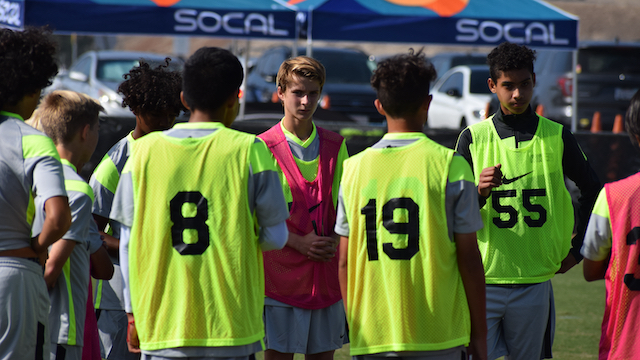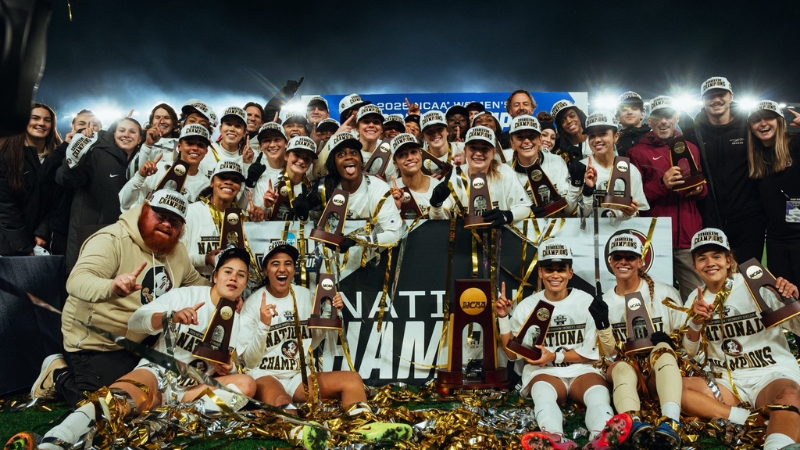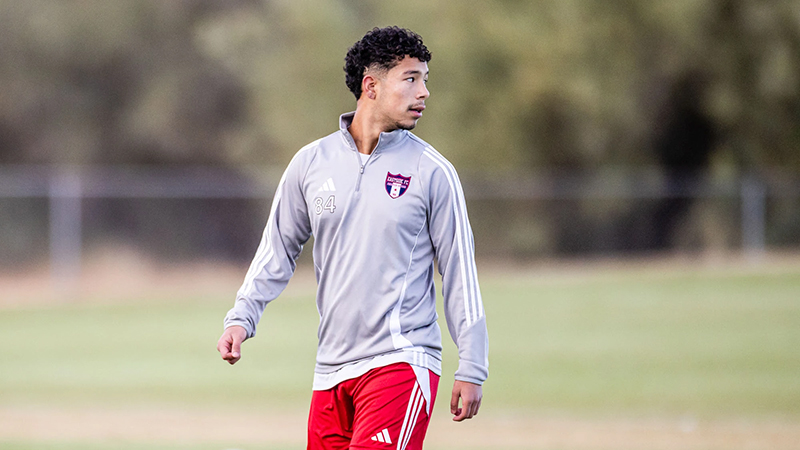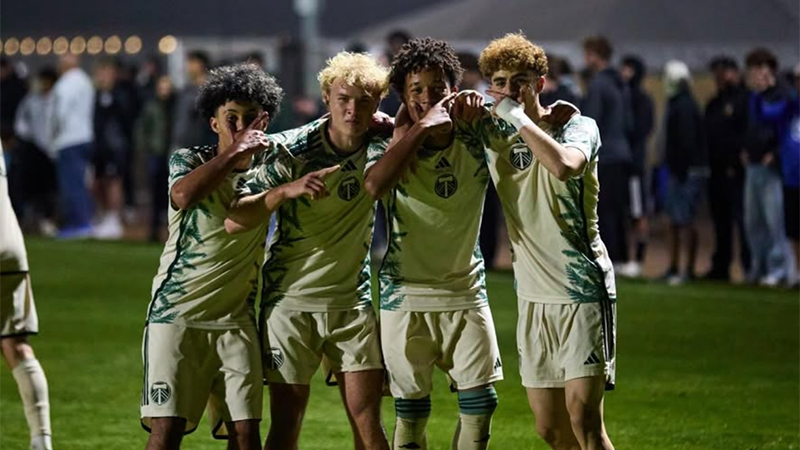U.S. Soccer’s Missing Piece

Sixteen years ago, U.S. Soccer depended on Southern California to be the cornerstone of the U.S. Men’s National Team. Six of the 23 players on the 2006 World Cup roster hailed from the Golden State - far more than any other region in the country.
Today, there is a very real possibility that U.S. Soccer will take a squad to the 2022 World Cup with zero players from Southern California on the roster.
The light shined on Southern California in December when the U.S. Men’s National Team took on Bosnia and Herzegovina in a friendly at the Dignity Health Sports Park in Carson, California. The soccer-specific venue, formerly a Mecca of the sport in this country, had an announced attendance of 11,044 on the night. U.S. head coach Gregg Berhalter selected local product Cristian Roldan as a starter for the squad that consisted of a weaker roster with mainly MLS players. The coach also called on former LA Galaxy standout Gyasi Zardes in the second half. Roldan and Zardes were the only two players of the 17 to play that night from the area.
Neither Roldan nor Zardes is a lock for a World Cup spot at this time - Roldan is slightly more likely to make the team as he made the roster for the November qualifying window, but he did not appear in either game during that spell.
While USA celebrated the triumph with the friendly victory to end the calendar year, the reality dawned on the region that a local player does not have a starring role with the team for the first time in decades.
Dallas or North Texas, for instance, had six players (either born in the area or played for the local youth clubs) from the region appear in that game - and just as many when the full roster is available during the qualifying window. North Texas’ State Association lists participants in the sport in the youth and adult game at 125,000 from the latest data. Cal South claims over 170,000 participants in the latest data available.
There is a cascading argument that U.S. Soccer has not done a good job connecting with the players in the region. Three of the top emerging talents from Southern California (Julian Araujo, David Ochoa, and Efrain Alvarez) elected to play for Mexico’s national team when called up to the squad.
The region is still lacking compared to other renown soccer hotbeds in the country. While it is a concern for the near-term, there is a change being implemented at the youth level for the long-term.
Cris Gilmore, the Director of Special Programming at SoCal (formerly SCDSL), is hoping to be at the forefront of improving and growing the game in Southern California. Gilmore previously spent time launching and developing NorCal Premier before returning to his home roots in Southern California recently.
Gilmore has plenty of expertise in the field as he shared with TopDrawerSoccer during an interview in November at the id2 event at the Silverlakes Fields in Norco, California.
“My journey was first to become a better soccer player, but I liked coaching,” Gilmore said when asked about his path into coaching. “I wanted to understand the game better. I felt like I wasn’t getting it here in America. I went to Denmark, I went to Finland, and then I went to the Netherlands. I lived there for four years. I got two Dutch coaching licenses.”
While in the Netherlands, Gilmore played for the first team for a club while coaching the youth teams. He took coaching courses taught only in Dutch while he was learning the language.
“That was my grad school.”
His determination in the first coaching course helped him land a job at a club, an invitation to take an advanced coaching course, and pave the pathway for his thirst for more knowledge about player development.
“I was trying to soak up as much as I could,” Gilmore said. “I was trying to take the Dutch secrets and bring them back someday.”
His girlfriend at the time, now wife, was training in the Netherlands to stay fit prior to the launch of the WUSA. She was selected by the San Jose CyberRays and he found himself heading back to California, but this time in the Bay Area.
He spent time coaching at San Jose State and with a local club. He also assisted with players like Abby Dahlkemper and Tierna Davidson on their path to the U.S. Women’s National Team along with countless others to the college game. He was one of the leading voices in the launch of NorCal Premier.
“We started to create coaching education environments in the region,” Gilmore said about his role with NorCal Premier. “We created this Player Development Program to develop and identify top players. It was really more of a European model in how federations elect the best players in each city or region and they come together over the 10-month season and that would help create higher levels for the players than they experienced in their home environment and alternate pathways to prepare them for higher levels like youth national teams or professional level some day.”
He moved onto roles with Mustang Soccer Club, San Jose Earthquakes, and others as he described it, “I was layering experience with experience.” The well-rounded approach helped him gain insight into many different levels of the club and adult game in the state and country. It also proved to be a building block for an upcoming challenge as he set his sights on returning to Southern California in 2021.
“My priority is how do I bring the region together,” Gilmore said about his work at SoCal. “The general impression of the area from outsiders before I moved here is that it was a very volatile community of soccer - a lot of individual islands. The perception was that everyone was doing their own thing and not collaborating like we were doing in Northern California.”
One of Gilmore’s first projects was assembling a roster for an id2 event in November. The US Club Soccer id2 program is a pathway to the national team and includes an impressive alum list with the likes of Christian Pulisic and Tyler Adams among the recent players to be included in the id2 National Selection team.
US Club Soccer id2 has events in regions across the country throughout the club season. From these events, the best players are selected from an international trip. Gilmore took on the task of assembling the group for the event in November in Southern California.
“I started to formulate the plan in the middle of April, May knowing that big tournaments were coming up. I was thinking ‘how are we going to find these players?’ Who are we going after? I needed scouts to help me. I found over 80 scouts willing to help me.”
“We had weekly meetings to pin down who were the best teams on the boys, who were the best on the girls, and who were the best coaches,” Gilmore explained. “I started a database for each region: San Diego, LA, Orange County, and Inland Empire. Then it was what are we looking for when we go to scout? I had to create a framework - technique, intelligence, personality, speed. This is a combination of what I learned from Holland, NorCal, and what U.S. Soccer was using for their scouting because I was a scout for U.S. Soccer at one point as well. I tried to create a language that we could use to talk to one another. It’s a starting point.”
Gilmore explained that the “focus is on their technical ability and soccer intelligence.” From scouting thousands of players at local clubs, Gilmore and his scouts identified 240 players (60 from each region) in the 2008 age group for the boys and 2007 for the girls. Through tireless work, the player pool was shrunk from 240 down to 120 then down to the 30 (or so) that played in front of the US Club Soccer id2 scouts in November.
“This model will help us guide for the future. They’re our pioneers. We will continue with them all the way through high school. Next year, we will add two new age groups and so forth,” Gilmore said. “We are creating new pathways to help prepare the players for the next level whether it’s college, professional, national team.”
Southern California has been viewed as the golden goose in U.S. Soccer’s quest for glory in the men’s game. Famously former U.S. youth national team head coach Hugo Perez quipped that a team from Los Angeles could win a youth world cup. Perez, now the El Salvador head coach, has been holding talent identification events for the full and youth El Salvador national teams in Los Angeles.
Gilmore and many others see the potential for greatness from the region.
“The big picture is that we have one of the most talent rich boys player pools in the world,” Gilmore said. “On the girls side, we definitely have the most talent rich player pool on sheer numbers alone. If you look at what happened for France in 2018, they won the FIFA Men’s World Cup in Russia. One hundred players that played in that World Cup were born, raised, developed in France. Fifty of them were born, raised, developed in Paris.”
“I went over and studied what they were doing,” Gilmore said. “There were a lot of things and it’s a long discussion as to why, but ultimately it’s the federation organizing and working with all of the clubs in that region and then creating centers like this (for player identification). They were collaborating and working together - using that model as our SoCal model, using as many clubs as possible.”
When asked why it has not already happened for Southern California, Gilmore offered some insight from his brief time in his role in the region.
“That’s a question for U.S. Soccer. I haven’t been here long, I just moved back,” Gilmore said. “I think it takes more manpower, more hours to scouting. I’m hoping over the next 12 months to try to visit these youth national centers, understand the level, and help support them. That is what this program is about too - pushing the players trying to reach the youth national team.”
“Marieke [Laurens-van Tienhoven] (U.S. Soccer Talent Identification Manager - West) is here. We’ve had some representation from the boys but it’s just a matter of what their resources are and how much they want to put into this region. It doesn’t seem like they want to put a lot of resource into it, in my opinion, where it might be the most talent rich youth player pool in the country for the boys - and it definitely is for the girls. If you don’t have the resources to pay scouts to really go do the work, I mean this took so many hours to find the players. I have an army of 80 scouts now. If U.S. Soccer put the resources in to dig in and really see the region, there are so many players. I’m not sure they’ve put the money into it.”
Gerry McKeown, the Boys Director of the U.S. Club Soccer id2 program, added some insight when asked about the struggles.
“We need to do a better job of giving these players a path forward,” McKeown said. “There’s no richer talent pool than Southern California. When [the Men’s National Team] figures out what our style is, this area can’t be beat.”
There is also an argument about a ceiling being placed on the region with the archaic regional player right rules in MLS. If a player lives in Southern California, they only have two options for a professional pathway: LA Galaxy or LAFC. The latter is still building out the academy team as the first players to sign up for LAFC academy are just now entering the professional game or college level.
LA Galaxy has grossly trailed other franchises in providing a platform for players to go from the youth game to the professional ranks. Galaxy, which finished eighth of 13 teams in the Western Conference last season, had five players on Homegrown contracts for the 2021 season - only one player, Efrain Alvarez, played more than 300 minutes during the season. Galaxy, which had the highest team salary in MLS in 2021 at over $20 million, does not seem to have a clue how to use the talent rich area to build a competitive club.
Most of the top players from the area have left the region in their teenage years. The aforementioned Araujo, who played for Santa Barbara SC, joined the Barca Residency Academy in Casa Grande, Arizona before he signed a professional contract with Galaxy. Ochoa, from Oxnard, California, lived just far enough away from Galaxy’s home base that he was able to join Real Salt Lake’s residency program in Utah.
Matthew Hoppe, a current member of the U.S. Men’s National Team, was cut by the LA Galaxy academy as a teenager after one season with the youth team. He joined Barca Residency Academy with Araujo prior to signing with Schalke 04 in Germany when he was 18 years old. Hoppe currently plays for Mallorca in La Liga, and might be the most likely player in this article to make the World Cup roster.
There are some players who have passed through the Galaxy academy who are trying to break through in Europe like Alex Mendez and Ulysses Llanez. Mendez, formerly a star at the youth international level, is playing for Vizela in the Portugal first flight. Llanez, who earned one appearance with the U.S. Men’s National Team in 2019, is playing for St. Polten in the Austrian second flight, on loan from VfL Wolfsburg.
It’s not exactly a stellar list for a region that is perceived to be among the best in the country.
Gilmore is hoping to lead the change for Southern California. The 2008 boys players are the pioneers for this in-depth program. They will be given these types of opportunities throughout the club season and their youth club career. They are planning to help this group all the way to the college level or professional level - as well as add a new age group each season. Gilmore did caution that a place in the group now does not guarantee a spot forever.
“The thing with the training centers is if they are going to stay in, they have to show improvement,” he said. “We will continue to scout and find the best. It facilitates development because they can’t just rest and feel like they made it at 13 years old, which is also what is really special about the environment as well.”
He also spoke about organizing international trips. Through his studies of the top clubs in the world, international experience is the key to player development through their teenage years.
“When you turn 18 at all the top clubs, you have played 30-50 international matches so we need to create other ways to help prepare our players for higher levels.”
Gilmore and his army of scouts are hopeful to change the reputation of the SoCal player as they put in the work to reach more players and provide a different platform for them to reach their goals. U.S. Soccer’s scouts might not think they need it the region now, but turning the most populous region into the most potent region could be the key to long-term international success in the men’s game.
[Editor’s note: this piece was updated on Jan. 10., 2022 for clarity.]
Headlines
- Recruiting Roundup: December 8-14
- Tracking Division I Coaching Changes
- How Do I Get Scouted by TopDrawerSoccer?
- 2026 Women's Division I Transfer Tracker
- FSU Wins Second College Cup in Three Years
- Men's Team of the Week: Dec. 9
-
Men's NCAA Tournament Elite Eight Recap

-
MLS NEXT Fest: Under-19 Goal-Scorers

-
ECNL Boys Conference Cup Players to Know

- IMG Academy Player Rankings: Girls 2026



